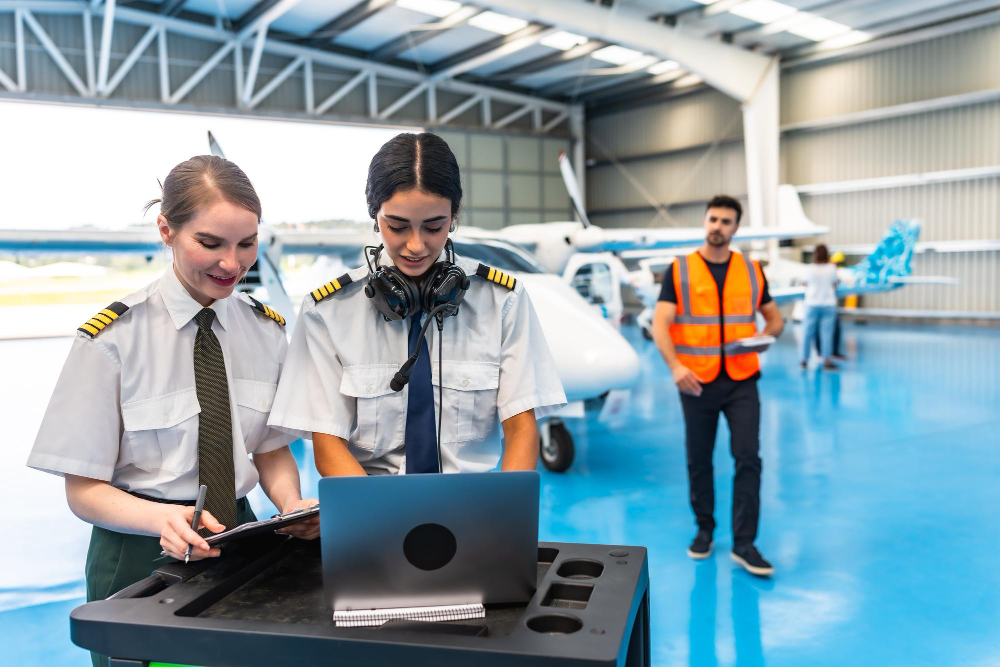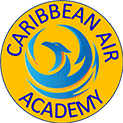Your First Aviation Training: What to Expect Before Takeoff

Starting your journey as a pilot is both thrilling and nerve-wracking. You've probably imagined yourself soaring through clear blue skies, but the path to earning your wings requires dedication, focus, and comprehensive training. Understanding what lies ahead can help ease those pre-flight jitters and set you up for success.
Aviation training combines ground school theory with hands-on flight experience, creating a structured pathway from complete beginner to confident pilot. The process varies depending on your goals—whether you're pursuing a private pilot license for weekend adventures or aiming for a commercial aviation career. Regardless of your end goal, your first aviation training experience will introduce you to fundamental concepts that form the backbone of safe flying.
Nassau offers an ideal setting for aviation training, with its favorable weather conditions, diverse airspace, and experienced instructors. The combination of year-round flying weather and varied training environments makes it an excellent location to begin your aviation journey.
Ground School: Building Your Aviation Foundation
Your aviation training begins long before you step into an aircraft. Ground school forms the theoretical foundation that every pilot needs, covering essential topics that will keep you safe in the air.
Essential Subject Areas
Flight training programs typically cover aerodynamics, which explains how aircraft generate lift and respond to control inputs. You'll learn about the four forces of flight—lift, weight, thrust, and drag—and how they interact during different phases of flight. This knowledge helps you understand why aircraft behave the way they do and how to respond appropriately to various situations.
Weather interpretation becomes second nature as you study meteorology principles. Understanding cloud formations, wind patterns, and pressure systems directly impacts flight safety and decision-making. You'll learn to read weather reports, interpret forecasts, and make informed decisions about when it's safe to fly.
Navigation principles introduce you to charts, compass headings, and modern GPS systems. Traditional pilotage and dead reckoning skills complement electronic navigation tools, ensuring you can find your way even if technology fails.
Federal Aviation Regulations
Aviation operates under strict regulatory oversight, and understanding these rules is crucial for safe operations. You'll study airspace classifications, communication procedures, and pilot privileges and limitations. These regulations might seem overwhelming initially, but they create a structured system that keeps everyone safe.
Flight training schools typically provide comprehensive study materials, including textbooks, online courses, and practice exams. Many programs use interactive software that adapts to your learning pace, helping you master challenging concepts through repetition and varied question formats.
Your First Flight Lesson: Taking the Controls
Nothing quite compares to your first time at the controls of an aircraft. Most flight instructors structure initial lessons to build confidence while introducing basic aircraft handling skills.
Pre-flight Inspection
Every flight begins with a thorough aircraft inspection. Your instructor will guide you through checking the engine, control surfaces, tires, and fuel systems. This process teaches attention to detail and reinforces that safety starts before the engine even starts.
Learning to spot potential issues during pre-flight inspections develops critical thinking skills that serve pilots throughout their careers. You'll understand how different components work together and what signs indicate potential problems.
Basic Aircraft Controls
Once airborne, you'll discover how responsive aircraft can be to control inputs. The three primary flight controls—elevator, ailerons, and rudder—work together to control the aircraft's movement around three axes. Initial lessons focus on gentle inputs and developing a feel for how the aircraft responds.
Most students are surprised by how sensitive aircraft controls can be compared to driving a car. Small, smooth inputs typically produce better results than large, aggressive movements. Your instructor will demonstrate proper techniques and gradually allow you more control as your skills develop.
Communication Skills
Aviation relies heavily on clear, concise communication. You'll learn standard phraseology for radio calls, how to interact with air traffic control, and proper procedures for different types of airspace. Nassau's controlled airspace provides excellent training opportunities for developing communication skills in realistic scenarios.
Initially, your instructor will handle most radio communications while you focus on flying. As you progress, you'll gradually take over more communication responsibilities, building confidence in your ability to interact professionally with controllers and other pilots.
Training Aircraft and Equipment
Flight schools typically use aircraft specifically chosen for training purposes. These planes prioritize safety, reliability, and ease of handling over performance or comfort.
Common Training Aircraft Features
Most training aircraft feature high-wing designs that provide inherent stability, making them more forgiving for beginning pilots. Simple, reliable engines and straightforward systems help students focus on fundamental flying skills without getting overwhelmed by complex technology.
Dual controls allow instructors to take over immediately if needed, providing a safety net during the learning process. This setup lets students push their comfort zones while maintaining safe margins.
Modern training aircraft often include GPS navigation systems, giving students exposure to contemporary avionics while still learning traditional navigation techniques. This combination prepares pilots for the mix of old and new technology they'll encounter throughout their aviation careers.
Safety Equipment and Procedures
Aviation training emphasizes safety at every step. You'll learn about emergency procedures, including engine failures, electrical problems, and various system malfunctions. While these situations are rare, understanding how to respond appropriately builds confidence and prepares you for unexpected situations.
Emergency equipment familiarization covers items like fire extinguishers, first aid kits, and emergency locator transmitters. Knowing where equipment is located and how to use it properly could prove crucial in emergency situations.
Progression Through Training Stages
Aviation training follows a logical progression, building skills incrementally to ensure solid foundations before advancing to more complex maneuvers.
Initial Solo Flight
One of the most memorable milestones in flight training is your first solo flight. This typically occurs after 10-20 hours of dual instruction, depending on individual progress and weather conditions. Your instructor will only authorize solo flight when confident in your ability to handle the aircraft safely.
The solo flight usually involves simple pattern work at your home airport, practicing takeoffs and landings without instructor assistance. Many pilots describe this experience as both terrifying and exhilarating—suddenly you're completely responsible for the aircraft and your own safety.
Cross-Country Flying
As your skills develop, training expands beyond your home airport to include cross-country flights. These longer trips teach practical navigation skills, flight planning, and decision-making in unfamiliar environments.
Nassau's location provides access to diverse airports and airspace types, from busy controlled fields to quiet uncontrolled airports. This variety gives students exposure to different operating environments and communication procedures.
Advanced Maneuvers
Later training stages introduce more challenging maneuvers designed to expand your skill set and prepare you for various situations. These might include steep turns, stalls, and emergency procedures that test your ability to maintain aircraft control under unusual conditions.
Each new maneuver builds upon previously learned skills, creating a comprehensive foundation of pilot abilities. Your instructor will introduce new challenges gradually, ensuring you're ready for each progression step.
Costs and Time Commitments
Understanding the financial and time investment required for aviation training helps set realistic expectations and plan accordingly.
Training Costs
Aviation training represents a significant investment, with costs varying based on aircraft type, instructor rates, and individual learning pace. Most programs charge separately for aircraft rental and instructor time, allowing students to progress at their own pace.
Faster progression through training typically results in lower overall costs, as skills remain fresh between lessons. Frequent flying—ideally 2-3 times per week—helps maintain proficiency and reduces the need for skill review at the beginning of each lesson.
Time Requirements
Private pilot training typically requires a minimum of 40 flight hours, though most students need 60-80 hours to reach checkride proficiency. Ground school and study time adds significantly to the total time investment.
Weather conditions, aircraft availability, and instructor scheduling can all impact training timelines. Nassau's favorable weather conditions help minimize weather-related delays, allowing more consistent training progress.
Taking the Next Step in Your Aviation Journey
Aviation training opens doors to incredible experiences and potentially rewarding careers. The skills you develop extend far beyond flying, including decision-making abilities, attention to detail, and confidence in managing complex situations.
Success in aviation training requires commitment, patience, and willingness to learn from mistakes. Every pilot remembers their training days fondly, despite the challenges and occasional frustrations along the way.
If you're interested in aviation training in Nassau, contact Caribbean Air Academy today for more information. Their experienced instructors and comprehensive programs provide the foundation you need to achieve your aviation goals safely and efficiently.
